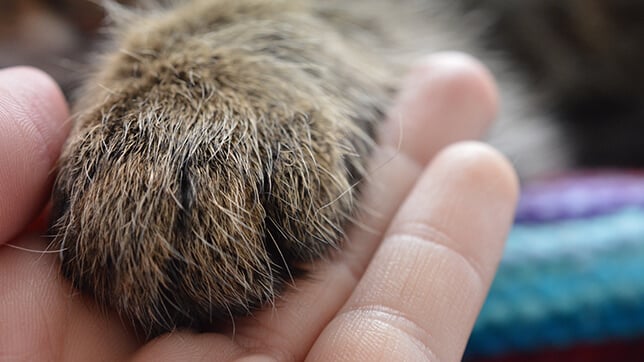3rd October 2024
What happens after your pet has been put to sleep
As you prepare for your dog, cat, or horse to be put to sleep, it’s natural to wonder what happens after the procedure.

Here is some guidance on what to expect, depending on the circumstances of your pet’s passing…
What happens after your dog or cat is put to sleep at a vet practice
It can be comforting to understand what’s likely to happen following a euthanasia (put to sleep) appointment. However, it’s important to remember that you’re the one who decides what you’d prefer to happen to your pet after they’ve passed away.
If you take your pet home
Taking your pet home enables you to either bury them in your own garden (as long as you do so legally) or take them to a pet cemetery.
Your vet can help to cover your pet with blankets, to ensure their final journey (on a waterproof surface, in case of bodily fluid leakage) is discrete, respectful, and comfortable.
If you leave your pet at the vet practice
Immediately after your pet has passed, you might be given the opportunity to clip hair or take a mould of their paws, if that’s something you’d like to do to remember them. Your vet will also ask whether you’d like to take your pet’s collar, favourite toy, and/or blanket home or leave those items with your pet.
Depending on the circumstances surrounding your pet’s passing, your vet may ask if you want them to perform a post-mortem – involving a medical investigation into why your pet passed away. Vets require an owner’s permission before they can carry out a post-mortem, so you’re able to decline if that’s something you’d prefer not to happen.
Many pet parents prefer to have their dog or cat cremated.
If you leave your pet at the vet practice, they’ll be cared for by veterinary staff and respectfully transported to a pet crematorium chosen by your vet practice team.
Before they can be transported, your dog or cat needs to be placed carefully into a special, colour-coded bag that’s clearly labelled to avoid the risk of misidentifying them. Your dog or cat will then be taken to cold storage, where they’ll rest until they can be transported to the pet crematorium.
What happens after your dog or cat is put to sleep at home
Having a pet put to sleep at home could be an option for dogs and cats who are terrified of attending a vet practice or are too unwell to travel.
Not all vets offer the option to have your dog or cat put to sleep at home. So, it’s essential to research ahead of time (where possible), to ensure your chosen vet can visit your pet at your home, if that’s what you want for them.
Often, during an at-home euthanasia appointment, the vet will administer sedative and painkillers, to help the dog or cat stay calm and comfortable before putting them to sleep peacefully.
Just the same as if they were put to sleep at a vet practice, it’s an owner’s decision as to what happens to their dog or cat following euthanasia. If you’d prefer for your pet to be transported to a pet crematorium, your vet should be able to help make the necessary arrangements.
What happens after your horse is put to sleep
Before the euthanasia appointment, your vet will support you to arrange your horse’s transport to their final resting place. Where possible, choose a safe space for your horse to be put to sleep that can be easily accessed by large vehicles, to ensure they can be safely transported afterwards.
Once the vet has confirmed a horse has peacefully passed away, the removal of their body from the site where they were put to sleep can be distressing for owners.
Please don’t feel guilty if you’d prefer not to be there while your horse’s body is taken away, since watching them being loaded onto a vehicle might be upsetting.
You’re responsible for deciding what happens to your horse after they’ve been put to sleep. Therefore, you’ll have to decide whether you’d prefer a legal burial (contact your local council for details) or transport to an animal crematorium that can cater for horses.
Basic overview of animal cremation
As a basic overview of animal cremation, you can choose standard cremation – when your dog’s, cat’s, or horse’s ashes aren’t returned to you, but are scattered in a peaceful spot at the crematorium.
Alternatively, you can request an individual cremation and have your dog’s, cat’s, or horse’s ashes returned to you in a casket or urn.
If you feel that having your dog, cat, or horse cremated would be the best option for you and your family, you can read our article about pet cremation.
For advice and information about pet euthanasia, you can visit our articles covering queries such as:
- Should I stay with my pet when they’re put to sleep?
- What to expect when my pet is put to sleep.
- How to prepare an end-of-life plan for your pet.
- When is the right time to say goodbye?
To find out more about the grieving process and coping with pet loss, as well as to access support and resources, please visit our Pet Bereavement Hub.
